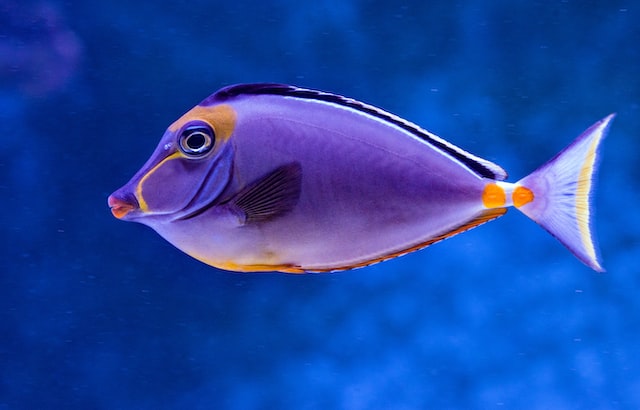When it comes to seafood, some fish are considered to be more luxurious than others. These fish are not only highly sought after by chefs and seafood enthusiasts, but they also come with a high price tag. In this article, we will be taking a look at the 10 most expensive fish to eat in the world. From the elusive bluefin tuna to the rarest species of caviar, these fish are sure to impress even the most discerning seafood connoisseur. So, without further ado, let’s dive into the top 10 most expensive fish to eat.
| No | Most Expensive Fish To Eat | Price/Pound |
| 1 | Bluefin Tuna | $300 |
| 2 | Pufferfish | $120 |
| 3 | Alaskan Wild King Salmon | $30 |
| 4 | Chinook Salmon | $29 |
| 5 | Halibut | $28 |
| 6 | Dover Sole | $27 |
| 7 | Sockeye Salmon | $25 |
| 8 | American Glass Eel | $24 |
| 9 | Swordfish |
$20
|
| 10 | Yellowfin Tuna |
$10
|
Bluefin Tuna
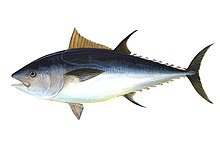
Bluefin Tuna is the most expensive fish to eat in the world. The Bluefin Tuna is a species of tuna that is native to the Atlantic, Pacific, and Mediterranean oceans. They are one of the largest species of tuna and can grow up to 10 feet in length and weigh up to 1,500 pounds.
Bluefin Tuna are known for their rich and flavorful meat, which is popular in sushi and sashimi dishes. However, overfishing has severely depleted Bluefin Tuna populations, leading to strict regulations on fishing and trade.
Bluefin Tuna is also a migratory species, traveling long distances across the ocean. They are known for their incredible strength and speed, making them a popular game fish for recreational anglers.
Conservation efforts are ongoing to protect and restore Bluefin Tuna populations, including measures to reduce fishing quotas and promote sustainable fishing practices.
Pufferfish
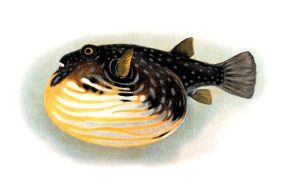
Pufferfish is the 2nd most expensive fish to eat in the world. Pufferfish, also known as blowfish or fugu, is a type of fish found in saltwater and freshwater habitats around the world. They are known for their ability to inflate their bodies to several times their normal size when threatened. This is done by swallowing water or air, which expands their stomachs and makes them difficult for predators to swallow.
In Japan, pufferfish is considered a delicacy, but only trained and licensed chefs are allowed to prepare it due to the risk of poisoning.
Pufferfish have a unique and interesting appearance, with a round body and protruding eyes. They also have rough, spiky skin and can vary in color from yellow, to green, brown, or black. They are typically slow-moving and can be found in shallow waters, coral reefs, and estuaries.
In addition to being a food source and a unique-looking fish, pufferfish also play an important role in the ecosystem as they help control the population of other fish species. They are also kept as pets in aquariums and are known for their hardy nature and ability to adapt to a variety of water conditions.
Alaskan Wild King Salmon
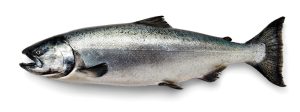
Alaskan Wild King Salmon is the 3rd most expensive fish to eat in the world. Alaskan Wild King Salmon, also known as Chinook Salmon, is a highly prized species of salmon known for its rich flavor and high oil content. They are the largest and perhaps the most flavorful of all Pacific salmon and can weigh up to 130 pounds. The flesh of King Salmon is deep red and has a firm, rich texture that is highly coveted by chefs and seafood lovers. These salmon can be found in the waters of Alaska and are often caught by commercial and sports fishermen. The Alaskan Wild King Salmon is an excellent source of protein, omega-3 fatty acids, and vitamin D, making it a healthy and delicious choice for any meal.
Chinook Salmon
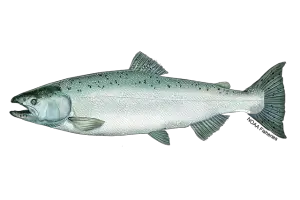
Chinook Salmon is the 4th most expensive fish to eat in the world. Chinook salmon, also known as king salmon, is a species of salmon that is native to the Pacific Ocean and parts of the northern Pacific rim. They are the largest species of salmon and can grow up to three feet in length and weigh up to 100 pounds. They have a silver-blue color on their backs with black spots and a white belly. Chinook salmon are an important commercial and sport fish and are found in the rivers and streams that flow into the Pacific Ocean. They have a complex life cycle where they hatch in freshwater, migrate to the ocean to grow and mature, and return to freshwater to spawn. Overfishing, habitat loss, and changes in ocean conditions have contributed to declines in chinook salmon populations in some areas. Conservation efforts are underway to protect and restore these important fish populations.
Halibut
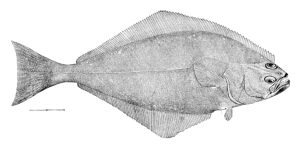
Halibut is the 5th most expensive fish to eat in the world. Halibut is a flatfish that is commonly found in the North Atlantic and North Pacific oceans. It is a popular seafood choice due to its firm, white meat, and mild flavor. Halibut can grow up to be quite large, with the largest recorded specimen weighing in at almost 500 pounds. It is often served grilled, baked, or fried, and pairs well with a variety of sauces and seasonings. Halibut is a good source of omega-3 fatty acids, protein, and vitamins, making it a healthy and nutritious choice.
Dover Sole
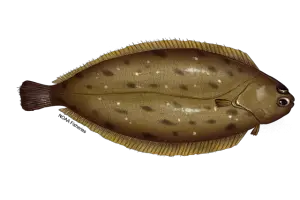
Dover Sole is the 6th most expensive fish to eat in the world. Dover Sole is a species of flatfish found in the waters of the eastern Atlantic Ocean and the North Sea. It is highly prized for its delicate, sweet flavor, firm texture, and low-fat content.
Dover Sole can grow up to 24 inches in length and they are typically brownish with a creamy underside. They are primarily caught via trawling and are often sold whole or filleted.
This fish is commonly prepared by broiling or pan-searing, and it pairs well with a variety of sauces and seasonings. It is enjoyed by seafood lovers worldwide and is considered one of the finest gourmet fish.
Sockeye Salmon
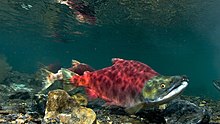
Sockeye Salmon is the 7th most expensive fish to eat in the world. Sockeye salmon, also known as red salmon, is one of the several species of Pacific salmon that are native to the northern Pacific Ocean and its rivers and streams.
They are usually found in the colder waters of Alaska, but they also inhabit northern British Columbia, Yukon, and the Kamchatka Peninsula in Russia.
Sockeye salmon are known for their bright red flesh, which is a result of their diet, high in krill and shrimp. They are an important food source for humans and other animals, including bears, eagles, and orcas.
Sockeye salmon are also highly valued for their taste and nutritional benefits. They are an excellent source of protein and omega-3 fatty acids, known to have heart-healthy benefits.
However, like most wild fish, sockeye salmon can be contaminated with pollutants such as mercury and PCBs. Therefore, it is important to consume them in moderation and choose sustainably sourced, low-mercury options whenever possible.
American Glass Eel
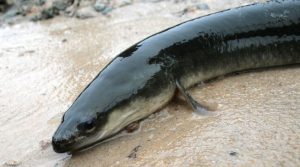
American Glass Eel is the 8th most expensive fish to eat in the world. The American glass eel, also known as the elver, is the juvenile form of the American eel (Anguilla rostrata). It is a transparent, small eel that travels from the Sargasso Sea in the Atlantic Ocean to the eastern coast of North America to mature into an eel.
The American glass eel is around 2-3 inches (5-7.5 cm) long and weighs only a few grams. It is characterized by its clear color, which is why it is called a “glass” eel. During its journey from the Sargasso Sea, the glass eel goes through several metamorphoses, transforming its small, leaf-shaped body with a long fin into a larger, more cylindrical eel with a distinct head and eyes.
The glass eel is an important ecological and economic resource in the United States, as it is harvested and sold for food and bait. They are caught either by dip netting or by using specialized devices called fish ladders that aid in the migration of the glass eels.
However, due to overfishing, pollution, and loss of habitat, the populations of the American glass eel have drastically decreased in recent years. As a result, several organizations have implemented conservation measures to protect the eels and sustain their populations.
Swordfish
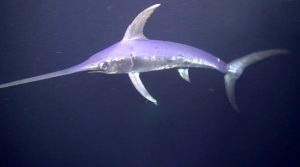
Swordfish is the 9th most expensive fish to eat in the world. Swordfish is a type of large migratory fish that lives in warmer ocean waters around the world. They are known for their long, sword-like bills, which they use to hunt and catch prey.
Swordfish are some of the fastest swimmers in the ocean, and they can reach speeds of up to 60 miles per hour. They are also among the largest of the game fish, reaching lengths of up to 14 feet and weights of up to 1,200 pounds.
Swordfish are highly prized game fish, sought after by sports fishermen for their size, strength, and fighting ability. They are also a popular food fish, with a firm, meaty flesh that is often grilled or broiled.
However, the swordfish population has been declining in recent years due to overfishing, and many countries have implemented regulations to protect the species. As a result, swordfish conservation efforts are underway globally.
Yellowfin Tuna

Yellowfin Tuna is the 10th most expensive fish to eat in the world. Yellowfin tuna (Thunnus albacares) is a species of tuna found in the tropical and subtropical waters of the world’s oceans. It is a fast-swimming fish that can grow up to 8 feet in length and weigh up to 440 pounds. Yellowfin tuna are prized by anglers for their fighting ability and by consumers for their delicious meat, which is often consumed raw as sushi or sashimi. They are also commercially important for their canned tuna meat. The yellowfin tuna is a top predator in the oceans, feeding on smaller fish, squid, and crustaceans. However, overfishing and habitat loss have led to declining populations in many areas. Conservation efforts are underway to ensure the future of this important species.
Frequently Asked Questions
Why is halibut so expensive?
Halibut is considered a luxury seafood item and is therefore priced higher than other types of fish. Some factors that contribute to its high cost include:
- Limited supply: Halibut is found in the colder waters of the North Atlantic and North Pacific, and their populations are not as abundant as other types of fish.
- Harvesting methods: Halibut are caught using longlines, which are time-consuming and costly to operate.
- High demand: Halibut is a popular fish with a mild, sweet flavor that is sought after by chefs and seafood enthusiasts.
- Processing and transportation costs: Halibut is usually caught in remote areas and needs to be transported to processing facilities and then to markets, which increases the overall cost.
- Seasonal availability: Halibut is only available during certain times of the year, which also contributes to its high cost.
Overall, halibut is an expensive fish due to a combination of factors including limited supply, high demand, and costly harvesting and processing methods.
What is the most expensive raw fish?
The most expensive raw fish is bluefin tuna. A single fish can fetch prices of up to $3 million at auction. Bluefin tuna is considered a delicacy in Japan and is highly sought after for sushi and sashimi. Overfishing and illegal fishing practices have led to a decline in the bluefin tuna population, making it even more valuable.
How long do betta fish live?
Betta fish, also known as Siamese fighting fish, typically live for 3-5 years in captivity with proper care and nutrition. However, some betta fish can live up to 6 years or longer with optimal living conditions.
What kinda fish is dory?
Dory is a blue tang fish.
What does fish oil do?
Fish oil is a rich source of omega-3 fatty acids, which have several health benefits. These include:
- Heart health: Omega-3s can help lower triglycerides, blood pressure, and the risk of heart disease.
- Brain health: Omega-3s are important for the development and function of the brain and may help reduce the risk of cognitive decline and depression.
- Inflammation: Omega-3s can help reduce inflammation throughout the body, which can help reduce the risk of chronic diseases such as arthritis and cancer.
- Vision: Omega-3s can help improve vision and may also help protect against age-related eye diseases.
- Pregnancy: Omega-3s are important for the development of a baby’s brain and eyes, and pregnant women are often advised to take fish oil supplements.
- Fertility: Omega-3s may help improve fertility and sperm quality in men.
It’s important to note that not all fish oils are created equal. It’s important to choose a high-quality fish oil supplement that has been tested for purity and potency. It’s also important to talk to a healthcare professional before taking any supplement, especially if you are pregnant, breastfeeding, or have any health conditions.
How to fry fish?
- Start by preparing the fish by cleaning and filleting it if necessary. Pat the fish dry with paper towels to remove any excess moisture.
- In a shallow dish, mix flour, salt, pepper, and any other desired seasonings.
- Heat a skillet over medium-high heat and add enough oil to cover the bottom of the skillet. You can use vegetables, canola, or peanut oil.
- Dip each piece of fish into the flour mixture, making sure to coat both sides evenly.
- Carefully place the fish into the hot oil and cook for 2-3 minutes on each side, or until the fish is golden brown and crispy.
- Remove the fish from the skillet and place it on a paper towel-lined plate to remove any excess oil.
- Serve the fish with your desired side dish and enjoy!
What do fish eat?
Fish eat a variety of food depending on their species and habitat. Some common types of food that fish eat include:
- Plankton: Small aquatic organisms that form the base of the food chain for many fish species.
- Algae: Many fish, such as herbivorous species, consume algae as their primary food source.
- Insects: Some fish, such as certain species of trout, will eat insects that fall into the water.
- Crustaceans: Fish that live in saltwater environments, such as shrimp and crab, are a common food source for many species of fish.
- Mollusks: Fish that live in saltwater environments, such as clams and oysters, are a common food source for many species of fish.
- Small fish: Many species of fish, such as pike and bass, will eat other smaller fish as their primary food source.
- Worms and other aquatic invertebrates: Some fish, such as catfish, will eat worms and other aquatic invertebrates as their primary food source.
How do fish sleep?
Fish do not have the same type of sleep as humans or other mammals. Fish do not have a true “sleep” state where they become unconscious and their muscles relax. Instead, fish have periods of rest where they become less active and their metabolism slows down. During this time, fish may close their eyes and stop swimming actively, but they are still able to respond to stimuli and can swim away if necessary. Some species of fish, such as sharks and some species of catfish, have been observed to have periods of inactivity where they rest in one place, but they are still able to swim away if threatened.
How to fish?
- First, gather all necessary equipment such as a fishing rod and reel, fishing line, hooks, lures or baits, and a fishing license (if required in your area).
- Choose a body of water to fish in, such as a lake, river, or stream. Research the type of fish that are commonly found in the area and choose baits or lures that are likely to attract them.
- Tie your hook or lure to the end of your fishing line, ensuring that it is securely fastened.
- Cast your line into the water by holding the rod with both hands, pulling the line back with your dominant hand, and then releasing it forward with a flick of the wrist.
- Wait patiently for a fish to bite. You can tell when a fish is biting by feeling a tug on the line or by seeing the tip of the rod bend.
- Once you feel a bite, quickly reel in the slack line and set the hook by pulling back on the rod. This will ensure that the hook is securely lodged in the fish’s mouth.
- Reel in the fish by turning the handle on the reel and pulling the rod back towards you. Be careful not to reel too fast, as this can cause the fish to break the line.
- Once the fish is close enough, use a fishing net or your hands to remove the hook and release the fish back into the water.
- Repeat the process until you have caught as many fish as you desire. Remember to always be respectful of the environment and to properly release any fish that you do not plan to keep.
Which sushi fish is the most expensive?
The most expensive sushi fish is typically considered to be bluefin tuna (also known as “maguro” or “hon-maguro” in Japanese). Bluefin tuna is highly prized for its rich, meaty flavor and the high-fat content in its belly (known as “toro”). Due to its high demand and limited supply, bluefin tuna can fetch prices of up to $100 or more per pound at sushi restaurants.

